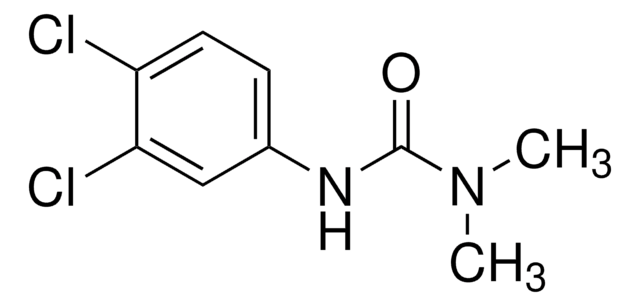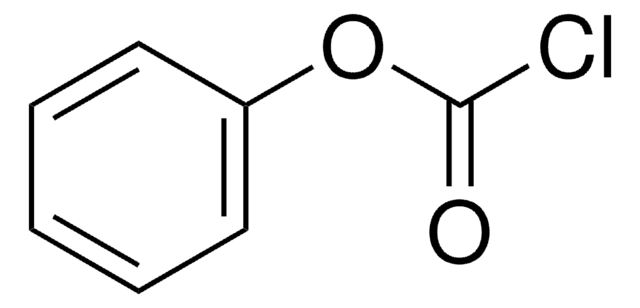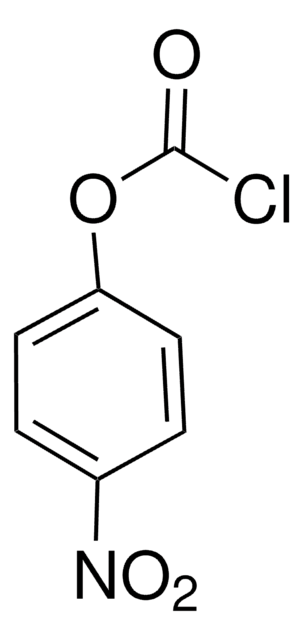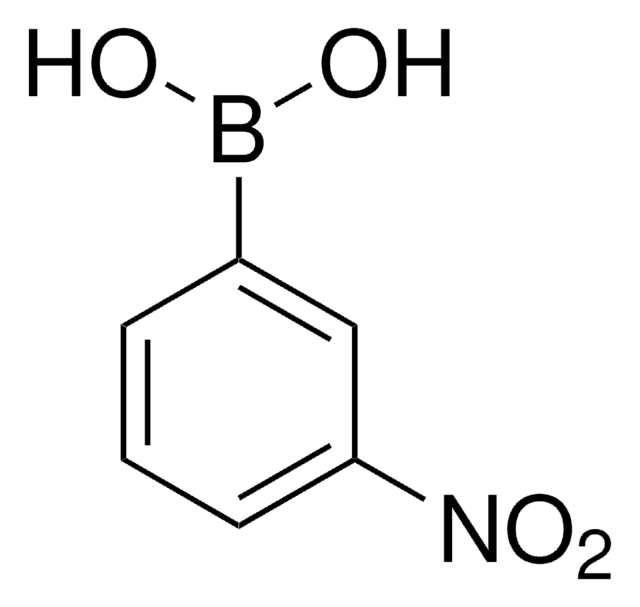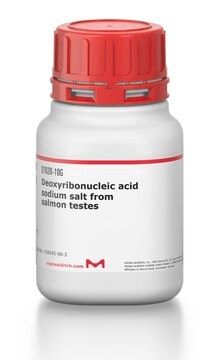271993
2,5-Dibromo-6-isopropyl-3-methyl-1,4-benzoquinone
Sinônimo(s):
2,5-Dibromo-3-methyl-6-isopropyl-p-benzoquinone, Dibromothymoquinone
Faça loginpara ver os preços organizacionais e de contrato
About This Item
Fórmula linear:
(CH3)2CHC6Br2(CH3)(=O)2
Número CAS:
Peso molecular:
321.99
Número CE:
Número MDL:
Código UNSPSC:
12171500
ID de substância PubChem:
NACRES:
NA.47
Produtos recomendados
Formulário
powder, crystals or chunks
Nível de qualidade
pf
70-72 °C (lit.)
aplicação(ões)
diagnostic assay manufacturing
hematology
histology
temperatura de armazenamento
room temp
cadeia de caracteres SMILES
CC(C)C1=C(Br)C(=O)C(C)=C(Br)C1=O
InChI
1S/C10H10Br2O2/c1-4(2)6-8(12)9(13)5(3)7(11)10(6)14/h4H,1-3H3
chave InChI
GHHZELQYJPWSMG-UHFFFAOYSA-N
Categorias relacionadas
Aplicação
2, 5-Dibromo-6-isopropyl-3-methyl-1, 4-benzoquinone has been used as a metabolic inhibitor of violaxanthin (V) cycle of Pelvetia canaliculata and is used as a photosynthetic electron transport chain (pETC) inhibitor.
Ações bioquímicas/fisiológicas
2, 5-Dibromo-6-isopropyl-3-methyl-1, 4-benzoquinone acts as an inhibitor of respiratory and photosynthetic processes.
Código de classe de armazenamento
11 - Combustible Solids
Classe de risco de água (WGK)
WGK 3
Ponto de fulgor (°F)
Not applicable
Ponto de fulgor (°C)
Not applicable
Equipamento de proteção individual
dust mask type N95 (US), Eyeshields, Gloves
Escolha uma das versões mais recentes:
Já possui este produto?
Encontre a documentação dos produtos que você adquiriu recentemente na biblioteca de documentos.
Deepak Venkanna et al.
Frontiers in plant science, 8, 1347-1347 (2017-08-22)
The protein superfamily of short-chain dehydrogenases/reductases (SDR), including members of the atypical type (aSDR), covers a huge range of catalyzed reactions and
Yuuki Sakai et al.
Planta, 221(6), 823-830 (2005-04-06)
In epidermal cells of the aquatic angiosperm Vallisneria gigantea Graebner, high-intensity blue light (BL) induces the avoidance response of chloroplasts. We examined simultaneous BL-induced changes in the configuration of actin filaments in the cytoplasmic layers that face the outer periclinal
Shan Gao et al.
Journal of experimental botany, 63(12), 4349-4358 (2012-03-23)
Porphyra yezoensis, a representative species of intertidal macro-algae, is able to withstand periodic desiccation at low tide but is submerged in seawater at high tide. In this study, changes in photosynthetic electron flow in P. yezoensis during desiccation and re-hydration
Ireneusz Slesak et al.
Plant & cell physiology, 44(6), 573-581 (2003-06-27)
Mesembryanthemum crystallinum, a facultative halophyte and C(3)-Crassulacean acid metabolism (CAM) intermediate plant, has become a favoured plant for studying stress response mechanisms during C(3)-CAM shifts. One hour of exposure to excess light (EL) caused inhibition of photosynthetic electron transport in
The KaiA protein of the cyanobacterial circadian oscillator is modulated by a redox-active cofactor.
Thammajun L Wood et al.
Proceedings of the National Academy of Sciences of the United States of America, 107(13), 5804-5809 (2010-03-17)
The circadian rhythms exhibited in the cyanobacterium Synechococcus elongatus are generated by an oscillator comprised of the proteins KaiA, KaiB, and KaiC. An external signal that commonly affects the circadian clock is light. Previously, we reported that the bacteriophytochrome-like protein
Global Trade Item Number
| SKU | GTIN |
|---|---|
| 271993-1G | |
| 271993-250MG | 4061826143988 |
Nossa equipe de cientistas tem experiência em todas as áreas de pesquisa, incluindo Life Sciences, ciência de materiais, síntese química, cromatografia, química analítica e muitas outras.
Entre em contato com a assistência técnica